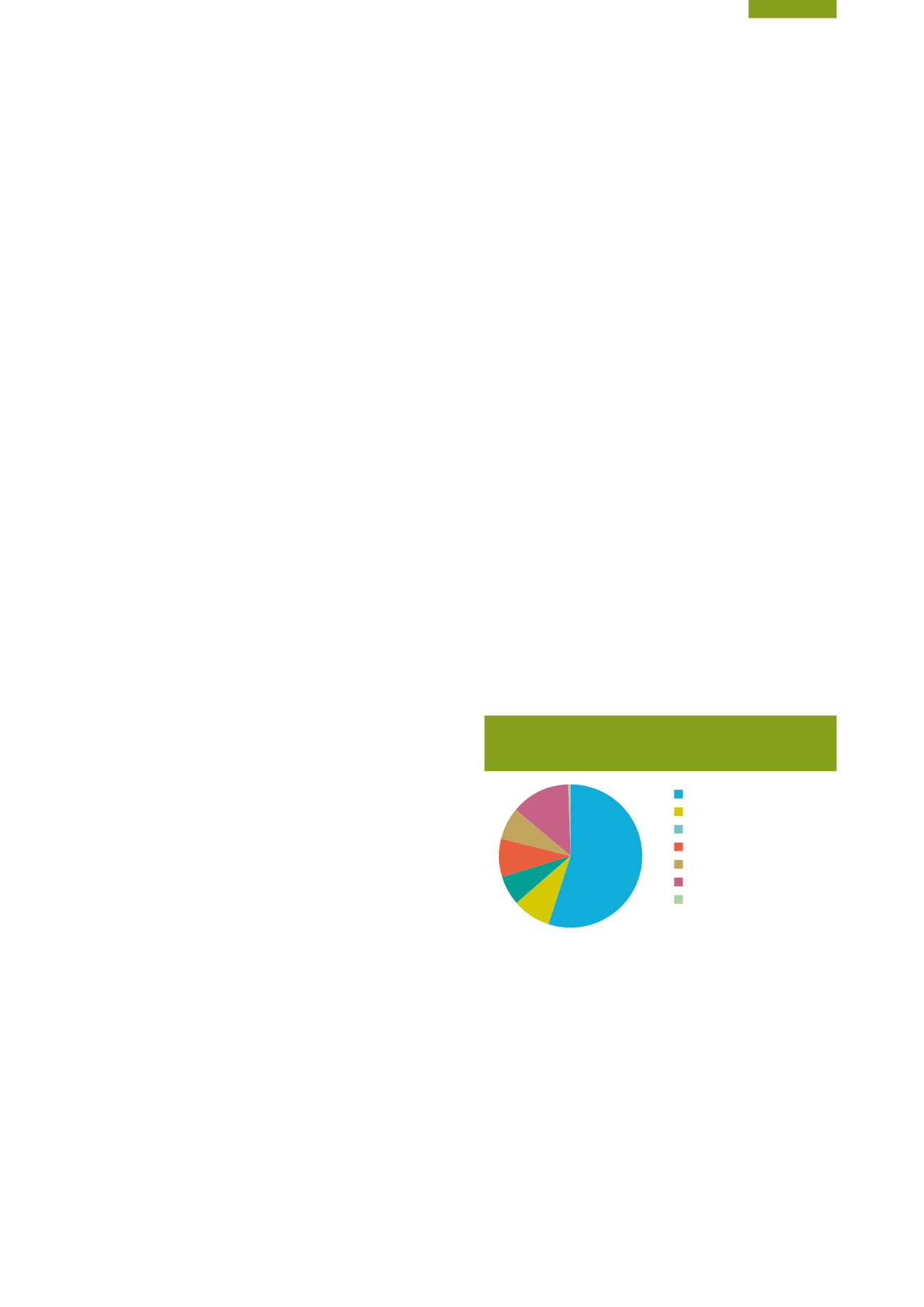

137
Chapter 8: Environment, Health and Wellbeing
just two, Stradbally and Ballyvooney – both in Co.
Waterford – are likely to be of “poor” quality at times due
to impacts from nearby waste water discharges.
Shellfish
Strict shellfish monitoring regimes are in place to
ensure that consumption of Irish shellfish poses little
risk to public health.
Irish coastal waters provide ideal conditions for shellfish
growth. In order to support shellfish life and growth
and to contribute to the high quality of directly edible
shellfish products, the Quality of Shellfish Waters
Regulations (SI No. 268 of 2006, as amended) required
the development of Pollution Reduction Programmes for
designated shellfish areas.
Norovirus is a leading cause of gastroenteritis in humans
and is found in high concentrations in municipal waste
water. Bivalve molluscan shellfish such as oysters are
filter-feeders and can become contaminated with human
pathogens including norovirus when grown in areas
impacted by municipal waste water discharges. Waste
water treatment is a critical control to reduce the extent
of pathogen discharge into aquatic environments.
The EPA recently funded research on norovirus in
waste water and shellfisheries, to examine the survival
of norovirus through waste water treatment, in the
aquatic environment and subsequent uptake in oysters
(Doré
et al
., 2013). The research found that a risk-
based management approach is required to control risk
associated with norovirus-contaminated oysters, and
guidelines to this effect should be developed by the Food
Safety Authority of Ireland in collaboration with the Sea
Fisheries Protection Authority.
Live bivalve molluscs, such as mussels, can be harvested only
from shellfish production areas that meet the classification
requirements for human consumption. Production areas are
classified by the Sea Fisheries Protection Authority according
to the quality of the waters. To protect against illness,
the Food Safety Authority of Ireland operates a shellfish
monitoring regime, in co-operation with the Sea Fisheries
Protection Authority and the Marine Institute, with shellfish
samples being checked before harvesting is allowed. The
controls are such that consumption of Irish shellfish poses
little risk to public health.
However, illegal shellfish harvesting can present a risk
to public health if contaminated shellfish makes it into
the food chain. In July 2015, the Sea Fisheries Protection
Authority seized 5 tonnes of mussels which had been
harvested illegally in the East Ferry area of Cork Harbour.
This area was closed for the harvesting of mussels at that
time owing to the presence of paralytic shellfish poisoning
toxins, which can cause serious illness. Consumers and
food businesses should purchase live bivalve molluscs
only from suppliers that are approved by the Sea Fisheries
Protection Authority to place live shellfish on the market
for human consumption.
Radioactivity in the Environment
Levels of radioactivity in the ambient Irish environment
do not pose a significant risk to public health.
Natural radioactivity in the environment has two
principal components: cosmic and geological. Cosmic
rays, originating in outer space, strike the Earth’s
atmosphere; geological radioactivity comes from long-
lived radionuclides present from the time of the formation
of the Earth. The most significant contribution to human
exposure comes from radon.
Artificial radiation is mainly associated with the routine
operation of medical diagnostics and treatment as well
as from nuclear installations such as nuclear power
plants and reprocessing plants. Past accidents at nuclear
installations and atmospheric nuclear weapons tests are
also sources of artificial radionuclides in the environment.
The most significant source of artificial radionuclides to
the Irish marine environment is the Sellafield nuclear fuel
reprocessing plant in Cumbria; however, the radiation
exposure from Sellafield represents only a very small
fraction of the overall average annual dose to a person in
Ireland, as shown in Figure 8.8 (EPA, 2015f).
Figure 8.8
Sources of Radiation in Ireland
(Source: EPA, 2015f)
Radon
55.1%
Thoron
8.7%
Natural radioactivity in food
6.5%
Cosmic radiation
8.6%
Natural radioactivity in soils
7.3%
Medical exposure of patients
13.5%
Artificial including weapons,
Chernobyl & Sellafield
0.3%
Levels of radioactivity in the Irish environment have been
routinely monitored since 1982. In 2015, EPA reported
on comprehensive measurements of radioactivity in air,
drinking water, marine environmental samples and a
range of foods (EPA, 2015f). The data presented in the
report confirmed that, although the levels of artificial
radionuclides in the Irish environment are detectable, they
are low and do not pose a significant risk to the health of
the Irish population.
In general, levels of artificial radioactivity in the Irish
environment remain fairly constant and are broadly
consistent with levels reported previously. It must be
emphasised that the levels of radioactive contamination


















